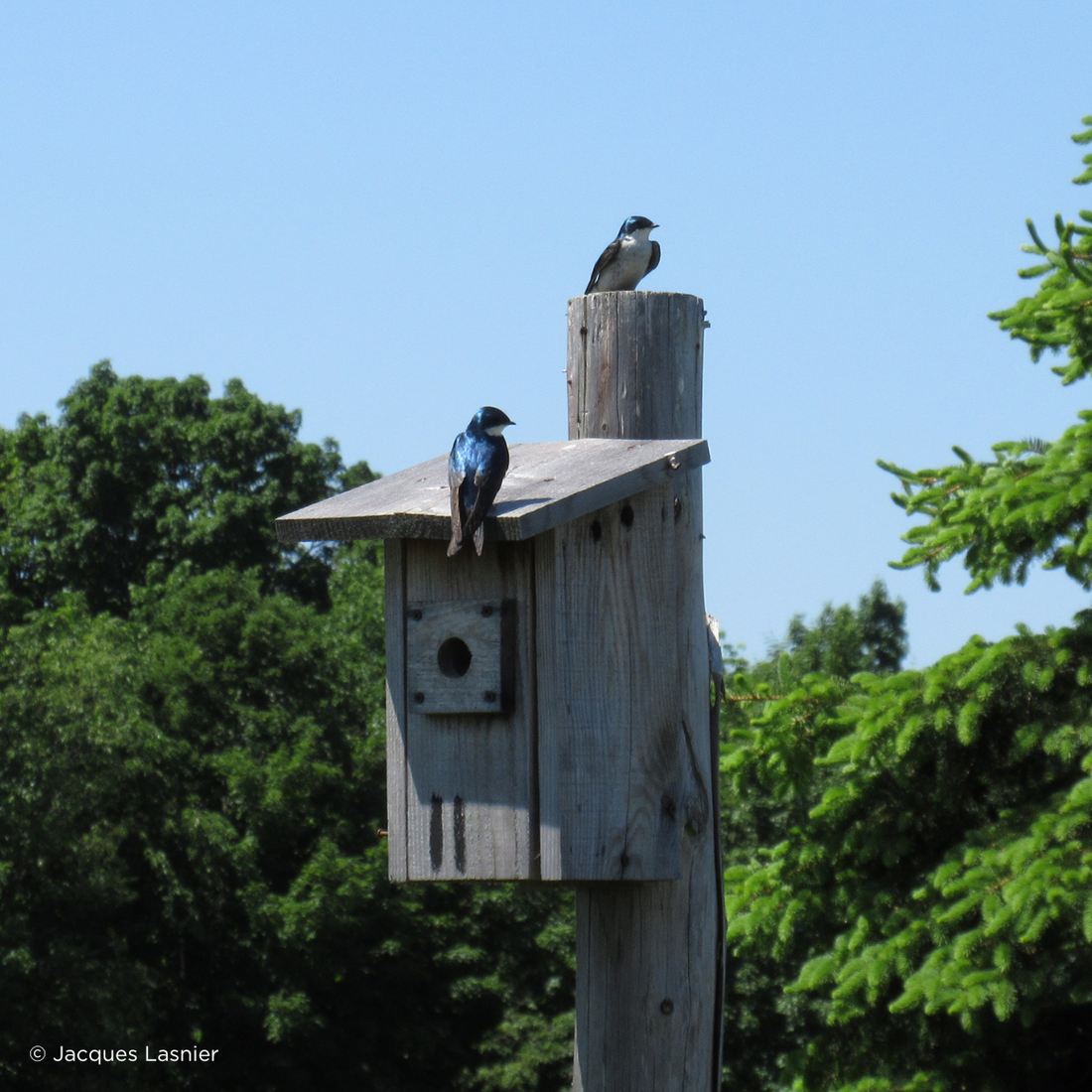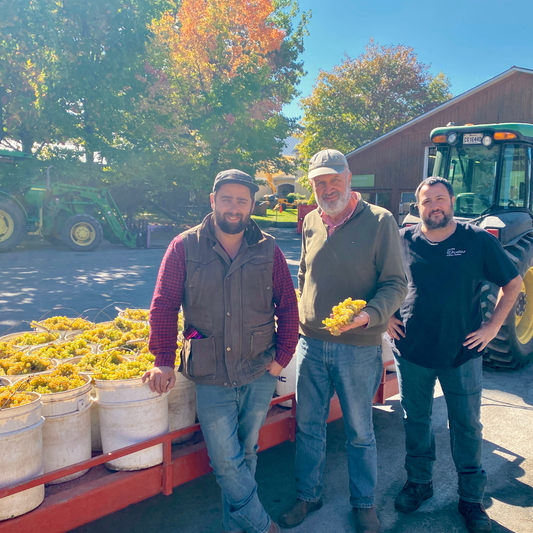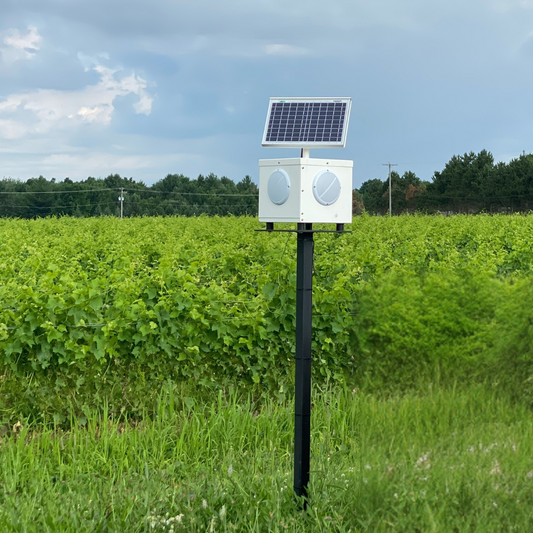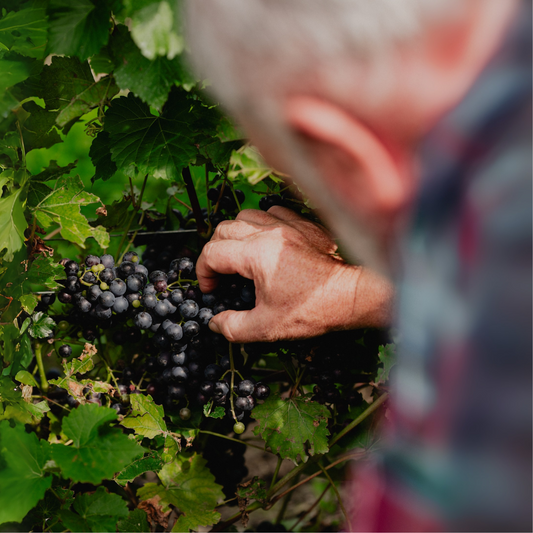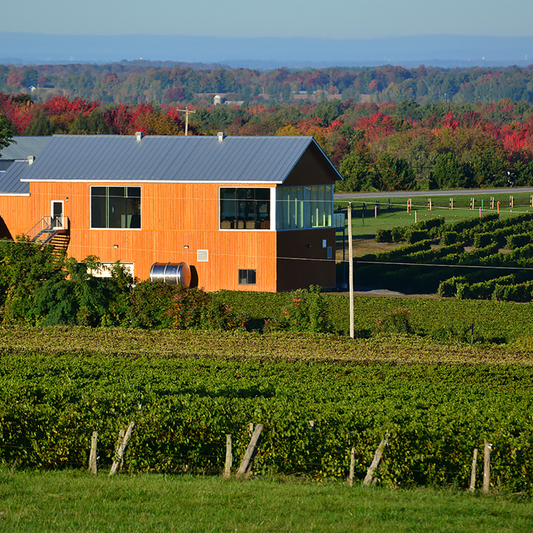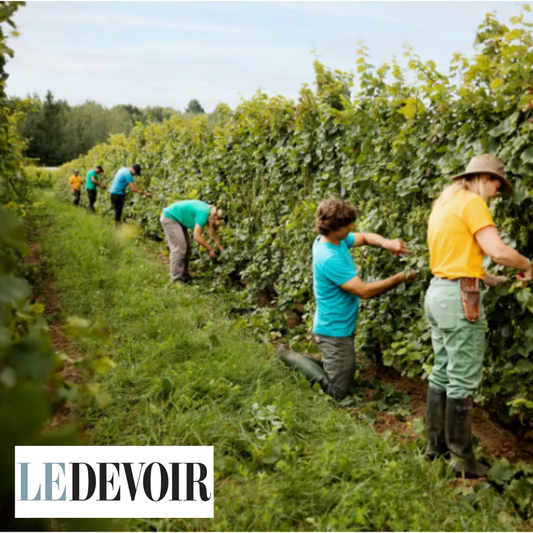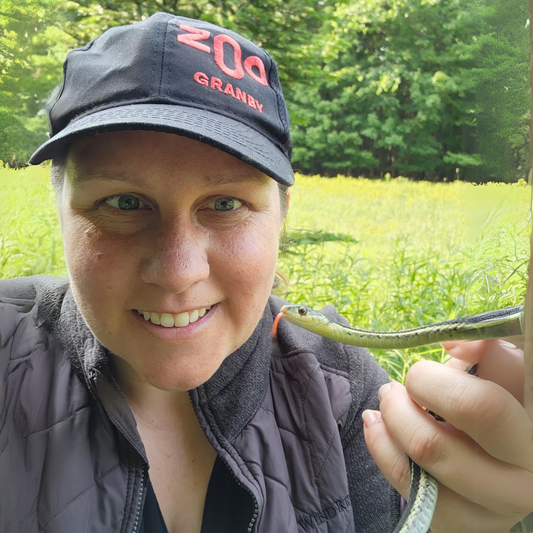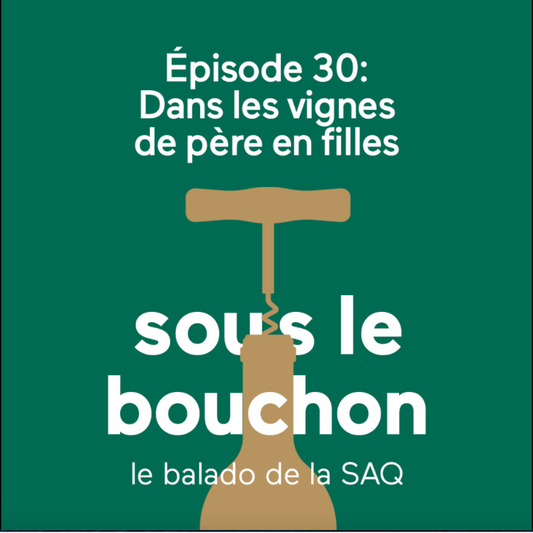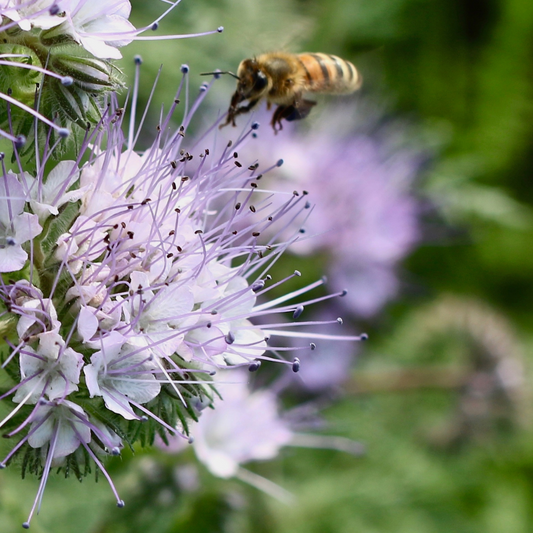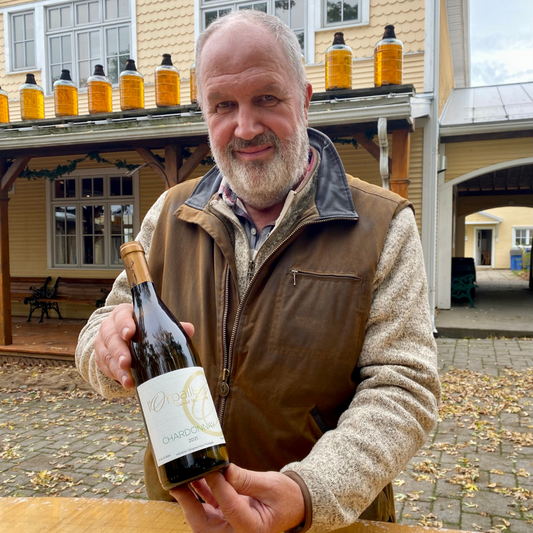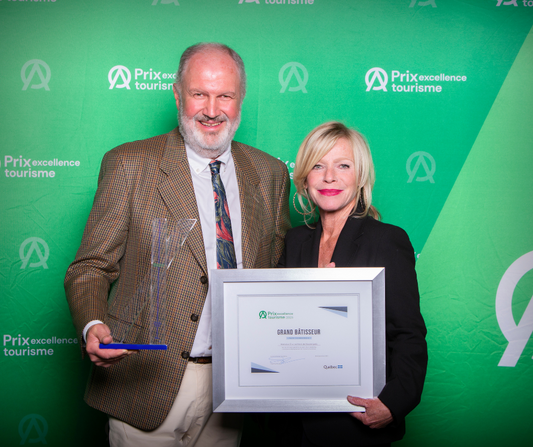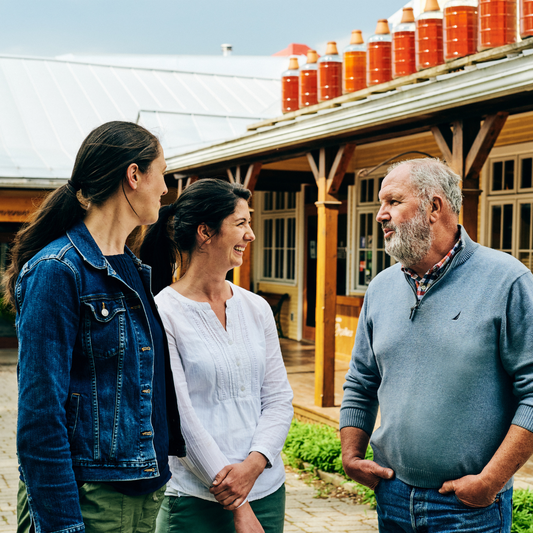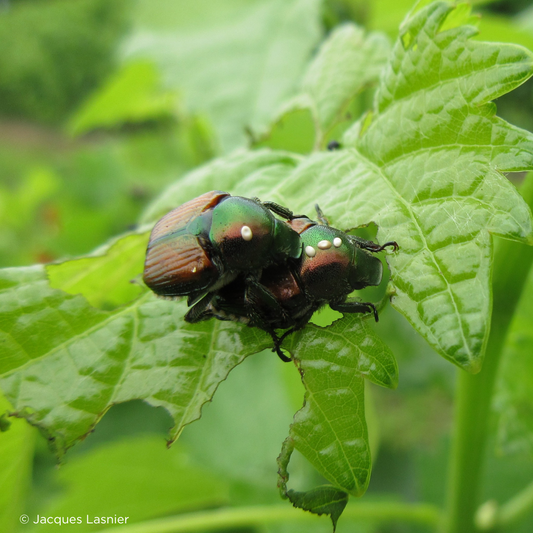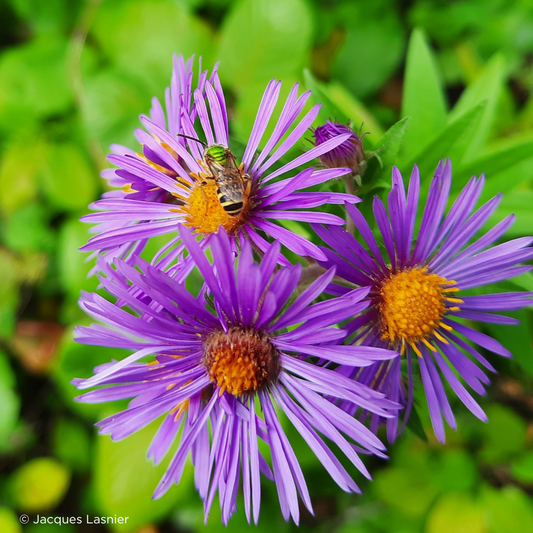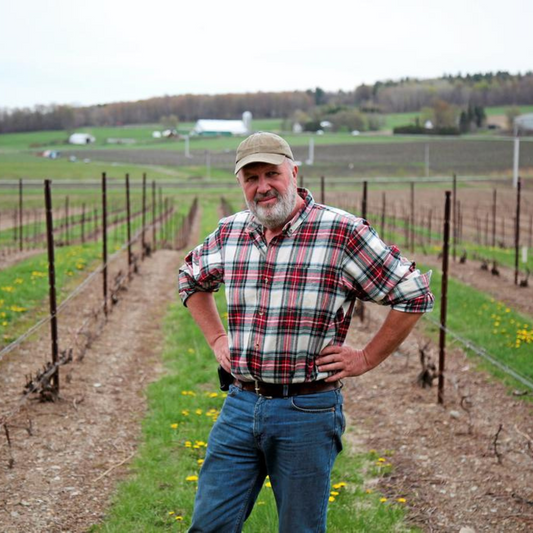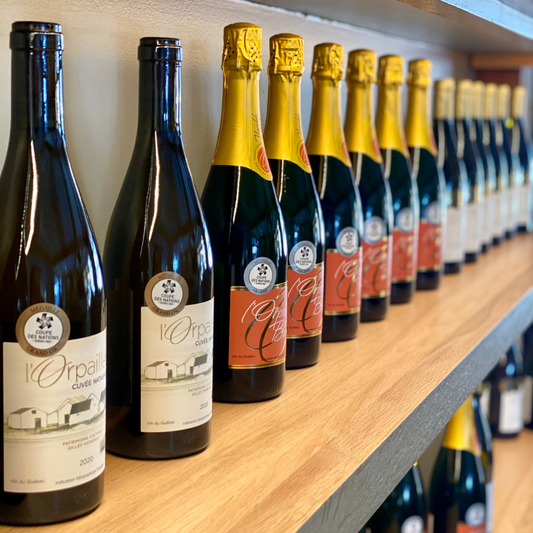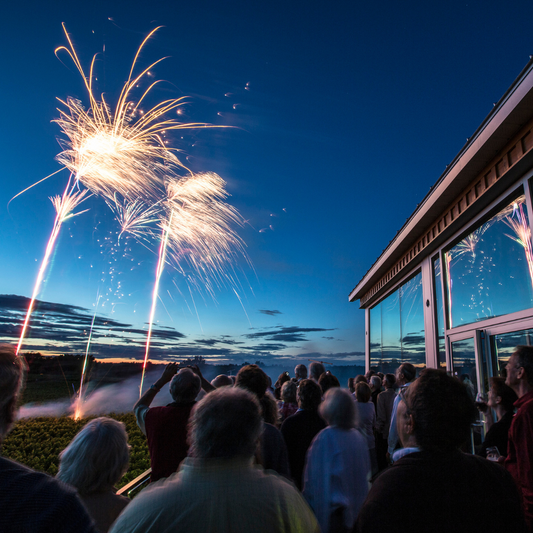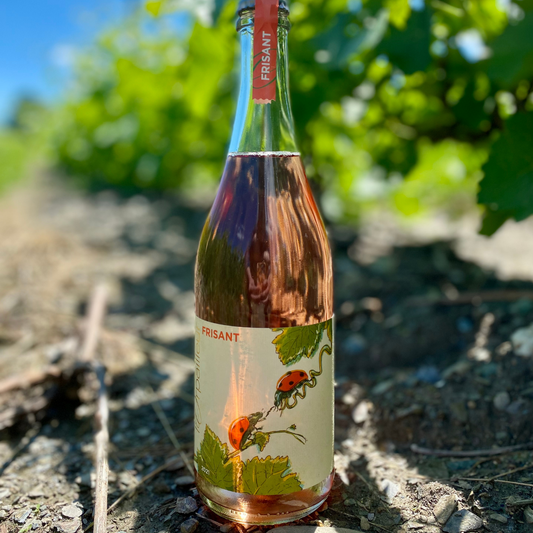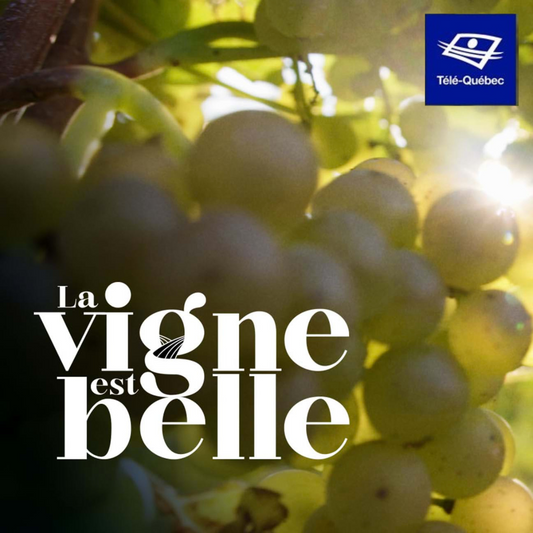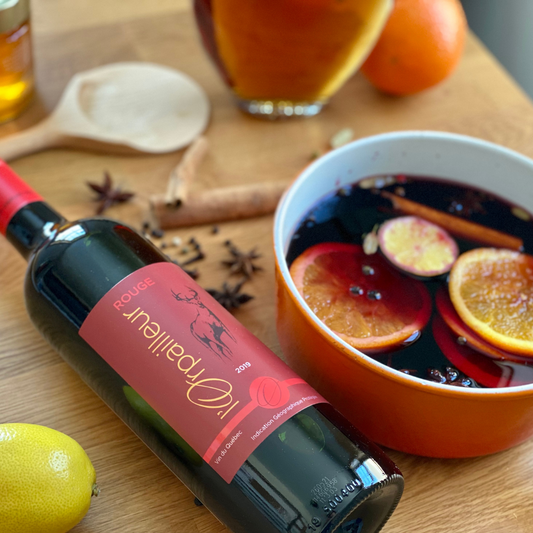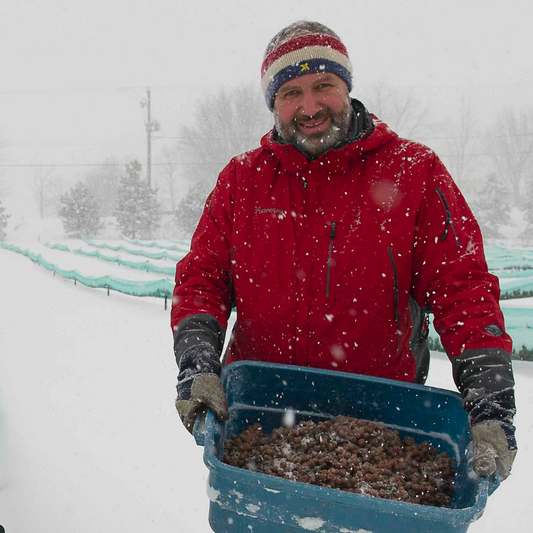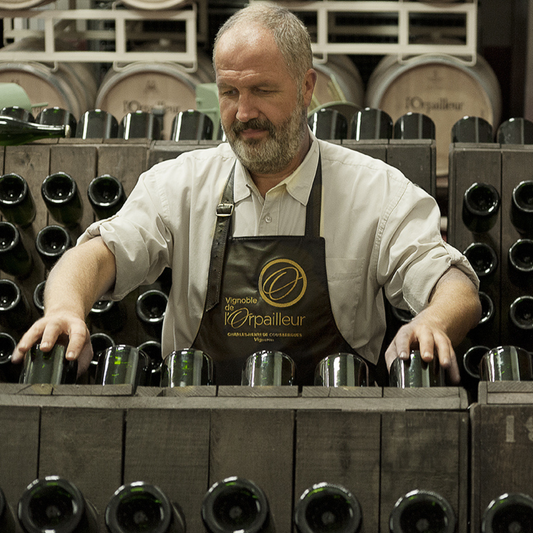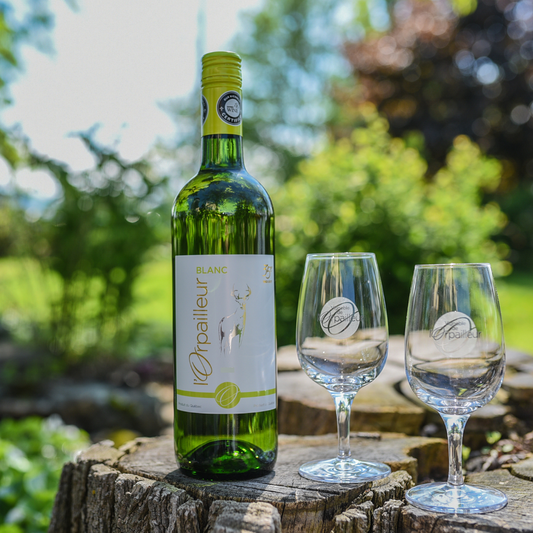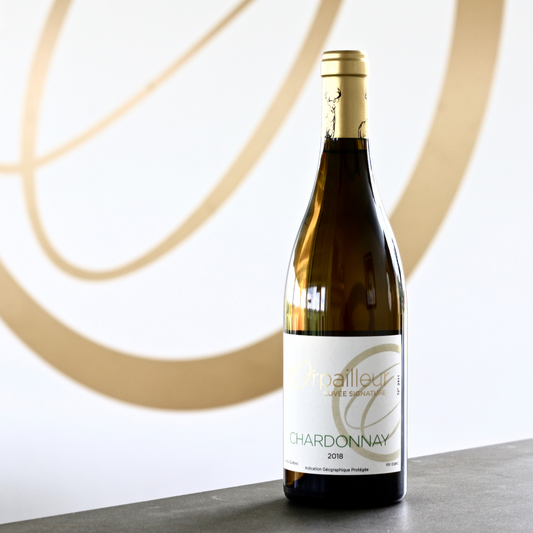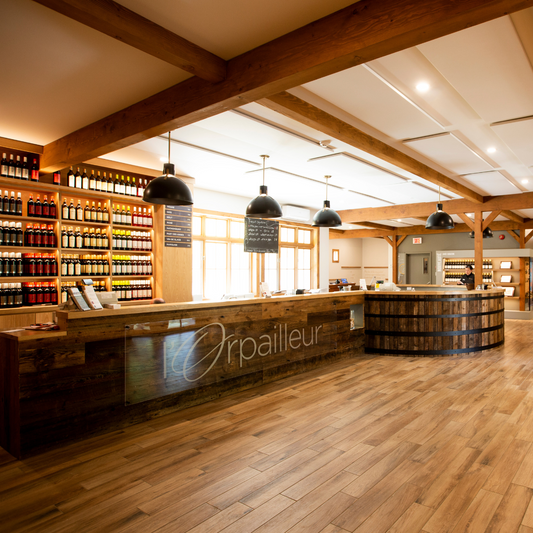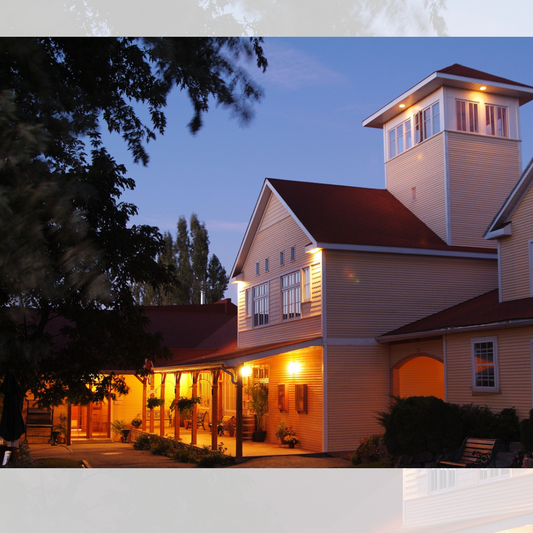DID YOU KNOW ?
L'Orpailleur is a sanctuary for tree swallows and eastern bluebirds . We invite you to read this article to find out how they are useful for the Vineyard!

Birdhouses near one of our wildflower strips.
WHY INSTALL NESTBOXES?
Our objective is to preserve and enhance our biodiversity by carrying out developments that are beneficial to both wildlife and our agricultural production. Thus, to promote the presence of bird species beneficial to crops, we made up for the few natural cavities in and around the plots of vines by installing nesting boxes.
Our nesting boxes mainly accommodate tree swallows and eastern bluebirds. Aerial insectivorous birds, such as these two species, are known to be large insect consumers, which can exceed 1,000 insects per day during the nesting period. They are precious allies of our reasoned culture, because they contribute in particular to:
- A natural and ecological regulation of insects harmful to the vine,
- proper functioning of the agroecosystem,
- increasing local biodiversity,
- the resilience of our winery.
THE NICHOIR PROJECT OF THE LOCAL ORGANIZATION PLEINS RAYS
Since 2016, we have been working with the non-profit organization Pleins Rayons, which introduces young adults with intellectual disabilities or autism spectrum disorder to agricultural work in order to enter the labor market.

The 2023 brigade which installs and maintains nesting boxes in the spring.
Pleins Rayons has developed a project to manufacture and install nesting boxes for farmers , horticulturists, winegrowers and apple growers in Brome-Missisquoi in order to naturally and ecologically control insects harmful to their respective productions.
Thanks to this partnership with their brigade, more than 100 nesting boxes are currently installed and regularly maintained at the Vignoble de l'Orpailleur!

TWO-TONE SWALLOW
The back and the head are blue with metallic reflections depending on the lighting. The tips of the wings are darker, tending towards black. The entire underside, from throat to tail, is white.

The Tree Swallow is a migratory species that winters in Mexico, Central America and Florida. Each year in May, it returns to North America to breed. It nests in cavities near open habitats, streams, pastures and agricultural fields. Unable to dig them itself, it depends on already existing cavities, such as nesting boxes or holes excavated in dead trees by woodpeckers. Today, with habit, the swallow has mainly adopted the houses arranged by humans. Since the late 1970s, researchers have observed a 5.5% decline in tree swallow populations in northeastern North America each year. In Quebec, according to the Breeding Bird Survey, the Tree Swallow population has decreased by 70.5% between 1970 and 2021.
The Tree Swallow is an aerial insectivorous bird, that is to say that it captures the insects it feeds on in mid-flight, gobbling them in the air as it passes. It feeds on many insect pests of the vine: Drosophila, leafhoppers, the winged (adult) stages of vine moths and mealybugs.

Leafhopper adult and its nymph. The leafhopper is a biting insect that empties the plant cells of the leaf which reduces photosynthesis which is essential for the ripening of the grape.
EASTERN BLUEBIRD
Its back is a brilliant blue and its chest is adorned with an orange tint. The plumage of the female is a little less bright and more restrained than that of the male. Rather discreet, it always delights the eyes of observers who manage to observe it or attract it to the nest box.

This small bird has become rare with the loss of its nesting sites and intense competition from house sparrows, European starlings and even tree swallows. However, the installation of nesting boxes seems to be able to make the difference. Installing the nesting boxes in pairs (two by two) can help avoid competition and promote cohabitation with the Tree Swallow. The bluebird nests in open agricultural habitats with small shrubs, pastures, wastelands and orchards.

The 2022 vintage of Orpailleur Frisant highlights the eastern bluebird beautifully illustrated by the artist Stéphane Lemardelé.
In summer, the eastern bluebird feeds mainly on insects. They consume vine pests such as: vine flea beetle, red-headed flea beetle and beetles, gall weevils and girdlers, black weevil and vine moth caterpillars. It captures them by keeping watch on perches, then darting to capture the prey thus spotted.

An arthropod pest, the vine flea beetle of the order Coleoptera.
This text was written with the precious collaboration of:
Isabelle Devost , M.Sc. biologist from the organization QuébecOiseaux

Jacques Lasnier , President and R&D Director At Ag-Cord inc.
There are several ways to support Pleins Rayons . The contribution and help of volunteers are essential to allow young people to flourish. Visit their website to find out how you can support the organization! http://pleinsrayons.ca/
References
Government of Canada | Annual Trends: Tree Swallow
University of Sherbrooke | Behavioral ecology - The call of the tree swallow
Nesting boxes and wildlife shelters Permabitat
Nature Quebec | Swallows in Quebec: how to recognize and protect them?

